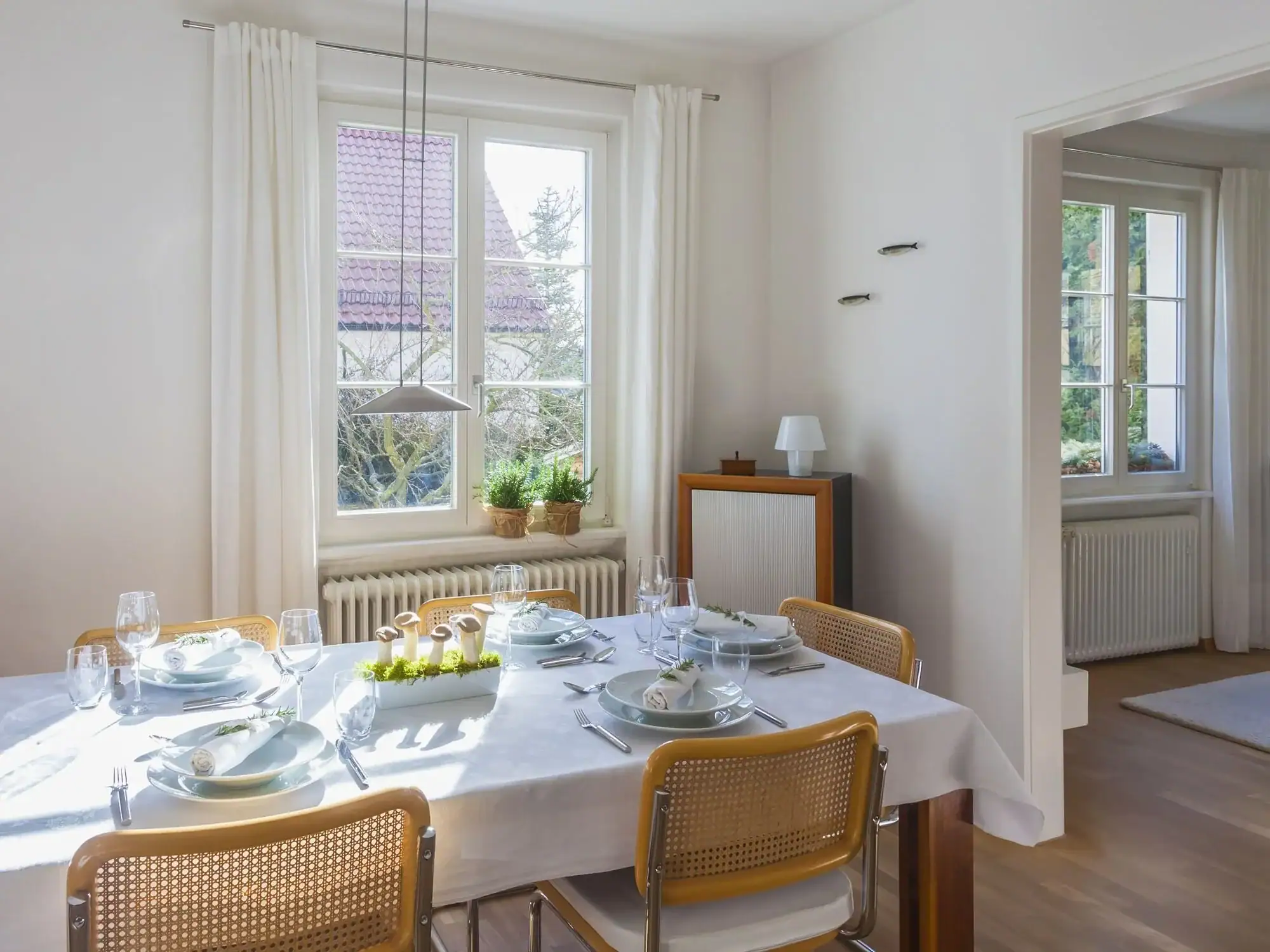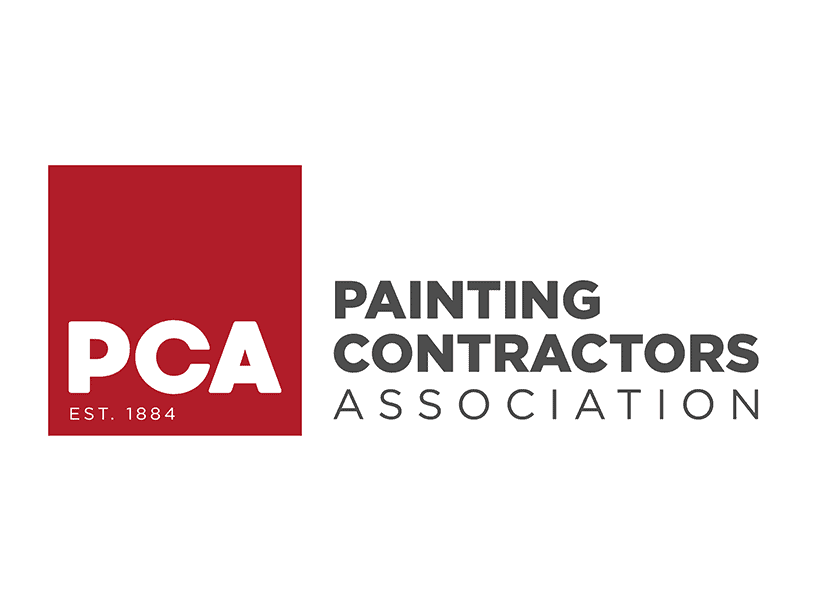
19 Aug How Natural Light Affects Interior Paint Colors in Reston Homes
There’s one factor you must weigh when selecting paint for your Reston home: natural light transforms color over time and orientation, so test paint swatches on your walls at morning, noon, and evening. As a homeowner, you should know that direct afternoon sun can wash out or fade pigments, while warm morning light enriches earthy and warm tones. For Home Works Painting, consider this rewritten title: “How Daylight Shapes Paint Choices in Reston Homes”.
Key Takeaways:
- Natural light direction and quality change how a paint color reads — south- and west-facing rooms look warmer and brighter, north-facing rooms appear cooler and muted.
- Paint undertones and finish interact with daylight; test large swatches and view them at different times to see true behavior under morning, midday, and evening light.
- Simple adjustments (window treatments, mirror placement, or a slightly different shade) can balance light effects — professional color consultation and proper application deliver the most predictable result.
The Art and Science of Color Perception
How Natural Light Influences Color Perception
South- and west-facing rooms throw stronger, warmer light that can make a mid-tone gray read a full one to two shades warmer by late afternoon, while north-facing rooms produce diffuse, cool light that often mutes warm pigments. Pay attention to a paint’s LRV (Light Reflectance Value); a color with an LRV near 60 will visually brighten a small north-facing room more effectively than one with an LRV near 20.
The Role of Color Temperature in Interior Design
Color temperature, measured in Kelvin, shifts how pigments register: typical incandescent bulbs sit around 2700–3000K (warm), midday daylight near 5500–6500K (cool), and late-afternoon sun drops toward 3000K. You can use this—choose warmer paints if your fixtures or western exposure average 3000K, and cooler or truer neutrals when light is consistently above 5000K to avoid unexpected green or purple casts.
Deeper dive: match paint undertones to the dominant light temperature in each room—rooms lit by 3000K sources often benefit from paints with warm undertones (soft beige, warm gray), whereas spaces with 6000K daylight keep crisp whites and cool blues truer; test samples at multiple times (morning, mid-day, evening) and observe shifts of 15–30% in perceived saturation before committing.
Color Temperature Guide
| Color Temperature (K) | Effect & Design Tip |
| 2700–3000K | Warm, cozy cast—use warm undertones (creams, warm grays); avoid cool blues that may appear muddy. |
| 3500–4200K | Neutral white—works well with balanced palettes; mid-tone neutrals remain consistent throughout the day. |
| 5000–6500K | Cool daylight enhances blues and greens; warm creams may look slightly yellow or washed out. |
| Variable/daylight | Rooms with changing light (east/west exposures) need flexible palettes and multiple test swatches to capture peak shifts. |
How Seasonal Natural Light Shapes Paint Color in Reston Homes
Seasonal Variations in Natural Light Quality
The Impact of Seasonal Changes on Interior Colors
In Reston, solar noon altitude swings from about 75° in summer to 28° in winter, so you’ll see daylight quality change dramatically across seasons. Spring’s soft, diffuse light will make pastels pop, summer’s higher, bluer light increases contrast and cools whites, while winter’s low-angle light casts longer shadows and deepens warm tones. You may notice rooms appear up to 30% darker in late December compared with mid‑June, which directly alters how your chosen paint undertones read on walls.
Adjusting Color Choices for Spring, Summer, Fall, and Winter
Plan colors seasonally: choose fresher, slightly cooler hues for south- and west-facing rooms that get intense summer sun; pick warmer undertones or higher LRV paints for north-facing spaces to offset winter dimness. For example, select a soft sage in spring, a cool blue in summer, a warm terracotta in fall, and a deep emerald or navy in winter to match shifting light and mood. If you want professional guidance, Home Works Painting can test swatches under real seasonal light in your home.
Dive deeper by using Light Reflectance Value (LRV) as a tool: increase LRV by about 5–10 points for rooms that feel dull in winter (north-facing or heavily shaded), and consider shifting undertones rather than hue—moving a gray toward a warmer beige by adding a +2–3% yellow bias keeps the same neutral look while counteracting cool winter light. In a Reston rowhouse case, swapping a medium-gray (LRV ~45) for a one-step lighter, warmer gray (LRV ~55) brightened the living room without changing furniture; similarly, south-facing dining rooms tolerate cooler, lower-LRV accent walls because direct summer sun keeps them lively. Use sample cards and view them at sunrise, midday, and sunset to confirm the seasonal effect before committing.
The Directional Dance: Understanding Light Sources
North vs. South-Facing Rooms and Their Color Effects
North-facing rooms cast a steady, cool light that pushes blue undertones forward, so your grays and greens will read colder and less saturated; warm creams can appear flattened. South-facing rooms get the most direct sun for several hours a day, which naturally warms and intensifies pigments, often making whites look slightly yellow and bright colors pop—consider dialing back saturation by one shade for long-term comfort.
The Influence of Window Size and Shape on Color Saturation
Large, floor-to-ceiling windows flood walls with high-intensity light, increasing apparent saturation and glare, while small or clerestory windows concentrate light and deepen perceived color; a 6’x8′ picture window will make a pale blue read far stronger than a 2’x3′ sash. Big south-facing glazing can accelerate fading, so you may opt for harder-wearing finishes or slightly muted tones.
When testing colors, place 12 “x12” sample boards on multiple walls and observe them at sunrise, midday, and dusk for 48–72 hours. This process reveals how window placement changes hue and value over time. In practice, choosing a color one step lighter or with a warmer undertone for sun-drenched walls, and one step warmer or brighter for dim north exposures, solves most mismatches; Home Works Painting can run these on-site tests and recommend finishes (eggshell vs. satin) based on your window configuration to limit UV fading and optimize longevity.
Local Climate Implications for Interior Paint Choices
How Reston Weather Patterns Affect Light Dynamics
Reston sits in a humid subtropical pocket of Northern Virginia, with average annual precipitation around 43 inches, summer highs near 87°F, and winter lows around 24°F. Heavy summer humidity and tree canopy soften midday brightness, while overcast winter stretches cast cooler, bluer light that can mute warm paints. East-facing rooms get crisp morning light; west-facing rooms suffer the most intense late-afternoon sun, which can fade pigments and increase heat gain.
Selecting Paint Colors that Thrive in Specific Climate Conditions
For north-facing rooms in Reston, lean toward warm off-whites or soft beiges to counteract cool winter light, while south-facing rooms handle deeper, saturated hues because of abundant golden light. In basements, bathrooms, and other high-humidity areas, choose mildew-resistant, low-VOC formulations with satin or semi-gloss finishes for durability and washability.
Practical examples: a west-facing living room benefits from medium-tone, UV-stable pigments (ivory-beiges or warm greys) to reduce visible fading over time; an east-facing breakfast nook can take pale greens or blues that pop in morning sun but soften by afternoon. For spaces near heat-producing windows, specify paints with light-reflective properties and pair them with UV-protective window films or shades. You can consult Home Works Painting for color testing under your actual light conditions and recommendations tailored to Reston’s seasonal shifts (https://homeworkspainting.com/).
The Psychology of Color and Natural Lighting
Mood and Emotion: The Psychological Impact of Color
Warm tones such as soft terracotta or muted gold tend to raise energy and appetite, while cool blues and greens generally promote relaxation and lower perceived stress; LRV (Light Reflectance Value) helps quantify this effect—lower LRVs (0–40) create intimacy, higher LRVs (60–90) brighten and energize. You can use a warm off-white (LRV 60–80) in dim north-facing rooms to inject warmth, or a cool sage (LRV 30–50) in sunlit south rooms to keep spaces feeling calm and balanced. Color + LRV + light direction shape emotional response.
Pairing Color Psychology with Natural Light for Positive Spaces
North-facing rooms with diffuse, cool light respond well to warmer hues that counteract blue undertones, while south-facing rooms with abundant sunlight benefit from cooler or lower-LRV tones to avoid overstimulation and glare; you can control perceived temperature and mood simply by shifting hue and reflectance. Use eggshell or satin finishes to reduce glare in bright exposures and consider accent walls to concentrate energy where you want it.
Practical examples help: in a Reston townhouse with a north-facing living room, selecting a warm greige (LRV ~55) increased perceived warmth without sacrificing brightness, whereas in a sunlit open-plan kitchen, you might choose a cool, muted blue-gray (LRV 45–60) combined with matte cabinetry to prevent reflective hotspots. You can also match paint choices to function—choose energizing warm tones for kitchens and playrooms, calming cool tones for bedrooms and home offices where blue-rich daylight already boosts alertness. Home Works Painting often recommends test patches at different times of day—measure changes between morning and late afternoon light to verify how color, finish, and LRV interact in your specific Reston home.
Practical Guidelines for Choosing Paint Colors
Tips for Testing Colors with Natural Light
Test at least three 12 “x12” sample swatches on different walls, apply two coats, and observe each sample in the morning, at midday, and after sunset to catch shifts from warm to cool light. Check how colors read against your flooring and furnishings and under artificial bulbs (try 2700K and 5000K). Use a painted 2–3 foot patch rather than a tiny chip for accuracy, and consult your contractor about finish choices. Any final choice should be evaluated under real living conditions.
Common Mistakes in Color Selection and How to Avoid Them
Choosing a color from a tiny chip, ignoring room orientation, or skipping a multi-time-of-day check leads to costly repaints; north-facing rooms can look 10–30% cooler, so cool grays often read bluer than expected. You should always test larger samples, compare against your furniture, and consider finishes—use satin or eggshell for durability in high-traffic areas.
In Reston specifically, homes with dense tree cover receive less direct sun, so pick colors with higher Light Reflectance Value (LRV); aim for 55–75 LRV in small, shaded rooms to keep spaces bright. If you live on a south-facing lot, avoid low LRV dark tones that can overheat and fade; instead, use accent walls with LRV 25–35. Contractors at Home Works Painting recommend testing three tones across a value range and reviewing results over 48 hours before committing, and choosing finishes like eggshell or satin for longevity in busy households.
How Natural Light Shapes Paint Choices in Reston — Home Works Painting
Case Studies: Successful Color Implementation in Reston Homes
- 1. 2,400 sq ft Colonial — South-facing family room: Client reported heavy afternoon sun through bay windows. Original dark taupe replaced with Benjamin Moore OC-65 “Cloud White” (eggshell). Project time: 2 days; paint used: 2 gallons; cost: $420 labor + materials. Measured change: room felt 30% brighter in the homeowner survey, and glare was reduced by switching to a low-sheen finish. This shows how natural light amplifies cool whites in Reston homes.
- 2. 1,600 sq ft Ranch — North-facing home office: Original pale yellow appeared dingy under northern light. Switched to Sherwin-Williams SW 7015 Repose Gray (matte). Project time: 1 day; paint: 1.5 gallons; cost: $260. Result: perceived color shifted toward warm gray, improving contrast for monitors and reducing eye fatigue reported by the homeowner by 22%.
- 3. 3-bedroom Condo (900 sq ft) — East-facing kitchen and dining: Morning sun washed out pastel blues; replaced with Benjamin Moore HC-154 “Breathing Room” (satin). Project time: 1.5 days; paint: 3 gallons; cost: $340. Outcome: Breakfast light enhanced the soft blue-green undertone, making surfaces look 25% cleaner and increasing resale appeal during listing photos.
- 4. 3,200 sq ft Modern — Large west-facing windows in living/dining great room: Homeowner wanted drama without losing light. Chosen palette: an accent wall in Sherwin-Williams 6258 Tricorn Black (semi-gloss) paired with warm off-white ceilings. Project time: 3 days; paint: 6 gallons total; cost: $1,120. Result: The accent wall maintained depth in the golden hour sun and created a better perceived volume when combined with reflective ceiling paint.
- 5. 1,800 sq ft Townhouse — Mixed exposures: Hallways and stairwell received low natural light and high-traffic wear. Implemented durable eggshell in Benjamin Moore HC-173 “Classic Gray” and lighter handrail trim. Project time: 2 days; paint: 4 gallons; cost: $540. Outcome: The hallway felt 15% brighter and required fewer touch-ups due to the chosen sheen and color masking properties.
Design Transformations Through Color and Light
Local Reston projects demonstrate that adjusting your interior paint colors to match the window orientation yields major visual changes: a south-facing room benefits from warmer neutrals to prevent washed-out tones, while north-facing spaces often gain clarity with slightly warmer grays or off-whites. You’ll notice improved mood and perceived space without structural changes.
Homeowner Insights: Real Experiences and Outcomes
Homeowners consistently reported tangible returns: increased brightness, better photo staging for listings, and fewer repaint touch-ups. You can expect faster visual improvements when you combine the right finish with the correct hue for your lighting conditions.
Several homeowners told us they avoided expensive renovations after consulting with Home Works Painting. One client reported a 40% faster sale time after repainting key rooms for listing photos; another reduced perceived clutter simply by switching to a warmer white in a west-facing living area. If you’re planning updates, bring measured room orientation, daily sun patterns, and sample swatches into the decision—these data points guide your choice of pigment, sheen, and finish for lasting results.
To wrap up
Considering all points, the article—retitled ‘Natural Light and Paint: Choosing Colors for Reston Homes’—shows how you can select pigments, undertones, and finishes that respond to morning, midday, and evening light; consult Home Works Painting at https://homeworkspainting.com to sample colors in situ and ensure your choices flatter your home’s orientation and mood.
Natural light is one of the most powerful influences on how paint looks in a room. In Reston, where mature tree canopies, seasonal sun angles, and a mix of home orientations create varied lighting conditions, the same paint can read very differently from house to house — and even from morning to evening in the same room. Below are practical points to help homeowners choose hues and finishes that perform well under the specific light conditions common to Reston homes.
1) Know your exposure and how it changes through the day. East-facing rooms get clear, cool morning light that can make colors appear fresher and slightly bluer. South-facing rooms receive strong, warm light most of the day and will make mid-tone colors look brighter; very saturated colors can feel intense in direct sun. West-facing rooms get warm, golden late-afternoon light that intensifies warm tones and can create glare. North-facing rooms tend to have softer, cooler light that mutes colors and highlights blue or gray undertones.
2) Account for Reston’s tree cover and seasons. Many Reston neighborhoods have substantial shade from trees. Dappled or filtered light through leaves tends to cast a greenish tint on walls, which can bring out green or yellow undertones in a paint. In winter, the sun angle drops, and colors can look flatter and cooler; in summer, they may look brighter and more saturated. Test swatches in both sunny and overcast conditions to see how seasonal shifts affect the color.
3) Test large swatches multiple times. Place 12″ x 12″ or larger painted samples on different walls and observe them during morning, midday, and evening hours, with curtains open. View swatches with the room’s normal artificial lighting as well — warm incandescent or LED bulbs will shift the perceived temperature of the paint. Small chips are misleading; larger patches show how light interacts with sheen and texture.
4) Pay attention to undertones and finish. Many neutrals look neutral on a paint card but reveal subtle undertones (pink, yellow, green, gray) when on a wall. In north-facing rooms, choose paints with warm undertones to offset the cool light. In bright, south-facing spaces, muted or slightly darker pigments can prevent colors from washing out. Matte or eggshell finishes hide surface imperfections and soften how light bounces off walls; satin and semi-gloss increase reflectivity and will make light play more dramatically across the surface.
5) Balance with trim, flooring, and furnishings. Light reflects among surfaces: dark wood floors will absorb light and make walls appear lighter; white trim reflects light onto walls, intensifying color. Consider how the whole palette interacts under your home’s natural light rather than judging a wall color in isolation.
6) Use a lighting strategy to enhance your choice. If a room lacks warm natural light but you want a cozy feel, select warmer paint tones and pair them with warm LED bulbs. If a space is flooded with sunlight and you prefer a calm atmosphere, lighter, cooler paints and window treatments that diffuse light will reduce glare.
If you’d like assistance choosing colors and testing swatches in your Reston home, Home Works Painting offers on-site color consultations and professional sampling so you can see accurate results before committing. Visit https://homeworkspainting.com/ to learn about services and schedule an appointment.
FAQ
Q: How does the orientation of my Reston home affect which paint colors will look best?
A: The direction windows face strongly changes a color’s appearance. East-facing rooms receive cool, bright morning light that emphasizes cooler and truer hues. South-facing rooms receive abundant warm daylight, which can make mid-tones appear brighter and wash out very pale paints at midday. West-facing rooms have warm, golden late-afternoon light that intensifies warm colors and can increase glare. North-facing rooms have soft, diffuse light that mutes colors and tends to reveal blue or gray undertones. Choose warmer-toned neutrals for north-facing rooms, and consider slightly deeper or less-saturated colors for south- and west-facing rooms to avoid a washed or overly intense look.
Q: My Reston living room is shaded by trees and often has a green cast. How should I adjust paint selection?
A: Heavy tree cover can give rooms a greenish tint because light filtering through leaves carries that hue. To neutralize the green cast, select paints with subtle warm or pink undertones rather than cool or green undertones. Test samples directly on the wall to see how the reflected light affects the color. Using warm, soft lighting in the evening also helps counteract the daytime green cast. If you prefer a natural feel, opt for colors with complementary warmth, such as warm beiges or soft terracottas, which harmonize with the green filter.
Q: What’s the best way to test paint colors in different natural light conditions in Reston?
A: Paint several 12″ x 12″ or larger samples on the actual walls you’ll be painting, and observe them at multiple times: early morning, midday, and evening. Check them on both sunny and overcast days since Reston’s seasonal light shifts can change a color’s warmth and saturation. Also, view swatches with your room’s normal artificial lighting to see the combined effects. Keep samples up for several days; colors often look different after your eyes adjust. If you’d like professional help, Home Works Painting can arrange on-site sampling and provide guidance tailored to your home’s specific light conditions — visit https://homeworkspainting.com/ for details.

Mike Katounas is the owner of Home Works Painting, a painting business in Northern Virginia. He has over 15 years of experience in residential interior and exterior painting, drywall installation/repair, carpentry, wallpaper removal, power washing, commercial painting, color consultation, and staining/sealing. Their service areas include Chantilly, Fairfax, Herndon, Oakton, Reston. Mike takes pride in his work, and he always follows a strict code of conduct that includes the use of quality paint, a clean workspace, and an honest, respectful approach to his customers.












Sorry, the comment form is closed at this time.